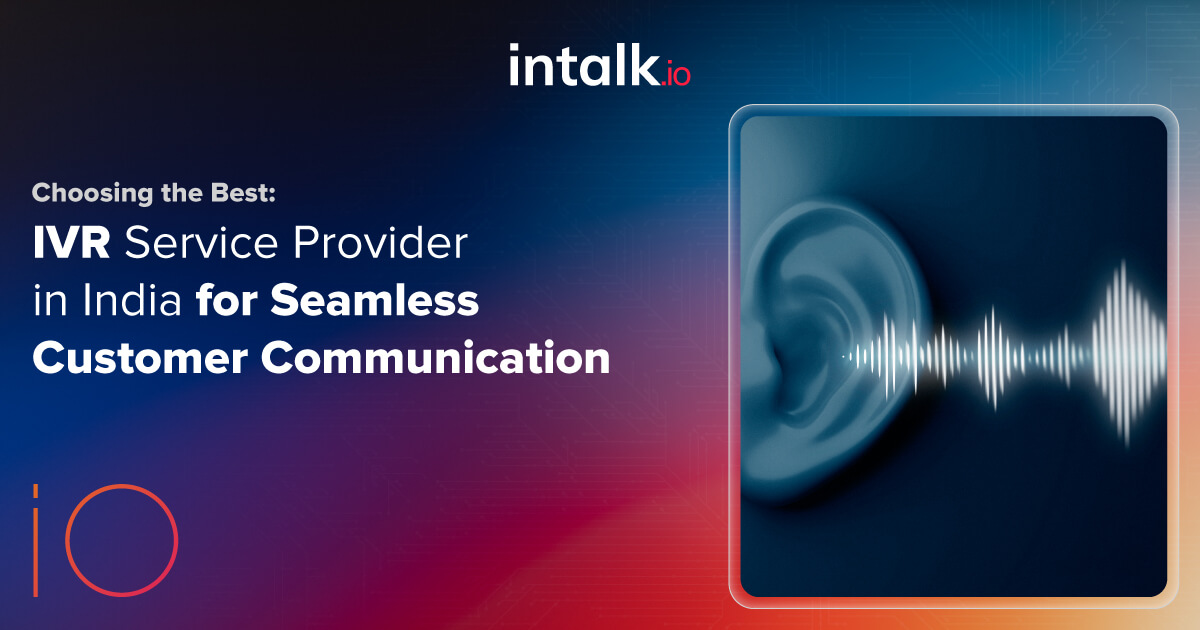In the vast landscape of customer service in India, businesses grapple with unique challenges such as prolonged wait times, language barriers, and the absence of personalization. In a bid to revolutionize customer interactions and overcome these hurdles, many organizations are increasingly turning to Interactive Voice Response (IVR) systems. This blog delves into the intricacies of customer service in India, explores the characteristics of the Indian customer, and outlines best practices for implementing and running effective IVR systems.
Understanding the Indian Customer
1. Cultural Considerations:
In India, business relationships are deeply intertwined with personal connections. Understanding the importance of personal relationships in the Indian business context is crucial. For instance, a personalized IVR message during festive seasons or cultural events can go a long way in establishing a connection with customers. Acknowledging and incorporating these cultural nuances into the IVR system can enhance the overall customer experience.
2. Language Preferences:
India is a linguistically diverse nation with a myriad of languages spoken across its regions. To cater to the diverse linguistic landscape, businesses must invest in a multilingual IVR system. Recognizing and respecting regional language preferences ensures effective communication and fosters a sense of inclusivity. Implementing a comprehensive language menu in the IVR, covering major regional languages, will cater to a broader audience.
3. Mobile-First Approach:
With the ubiquity of mobile phones in India, adopting a mobile-first approach is imperative. Businesses should optimize their IVR solutions for mobile usage, acknowledging the mobile phone as the primary communication device for a vast majority of the population. This entails designing IVR interfaces that are responsive, easy to navigate on mobile devices, and ensuring compatibility with various mobile operating systems.
4. Common Customer Pain Points
Long wait times, language barriers, and the lack of personalized interactions are common pain points for Indian customers. Addressing these challenges through the implementation of an efficient IVR system is essential for enhancing customer satisfaction. To further delve into the customer pain points, it’s essential to understand how these factors impact the overall customer journey and develop IVR strategies specifically aimed at mitigating these challenges.
Best Practices for Implementing and Running an IVR:
1. Localized IVR Solutions
Collaborating with a reputable IVR service provider in India ensures access to localized solutions. Customizing IVR menus in regional languages and incorporating colloquialisms can add a personalized touch to customer interactions. For instance, having a friendly and culturally appropriate greeting in the local language can immediately put the customer at ease, setting a positive tone for the interaction.
2. Dynamic Language Routing
Implementing dynamic language routing based on caller preferences ensures that customers can interact in their preferred language. This intelligent routing system enhances communication and fosters a more personalized experience. Furthermore, analyzing customer data to understand language preferences can help in optimizing the IVR system for a more efficient language routing mechanism.
3. Mobile Integration
Developing mobile-friendly IVR interfaces is critical for a seamless customer experience. SMS integration for notifications and updates, along with integration with popular messaging apps, ensures a holistic approach to customer communication. Mobile integration goes beyond just interface design; it involves leveraging mobile capabilities to enhance the overall customer journey, such as sending order updates, appointment reminders, or promotional offers through SMS.
4. Personalization and Caller Recognition
Utilizing customer data to personalize interactions and implementing caller recognition features contribute to a more seamless and personalized customer experience. Offering personalized promotions and services through the IVR system can significantly enhance customer engagement. For example, recognizing repeat customers and tailoring IVR options based on their previous interactions can create a sense of familiarity and importance.
5. Reducing Wait Times
Implementing effective call queuing strategies and providing call-back options during peak call times are crucial for reducing wait times. Utilizing AI to predict call volumes and allocate resources accordingly helps in managing customer expectations. Additionally, employing strategies such as offering self-service options within the IVR for common queries can further expedite the resolution process and reduce overall wait times.
6. Continuous Monitoring and Improvement
Regularly analyzing IVR analytics for performance insights and gathering customer feedback are essential for ongoing improvements. Staying updated with technological advancements ensures that the IVR system remains at the forefront of customer service excellence. Continuous monitoring involves not only assessing the efficiency of the IVR system but also understanding customer feedback to identify areas for improvement. Regularly updating the IVR system based on customer preferences and technological advancements ensures that it remains a valuable asset in providing exceptional customer experiences.
Conclusion:
As businesses navigate the dynamic market of India, the implementation of a robust IVR system tailored to local insights and best practices can significantly enhance customer satisfaction and loyalty. By partnering with a reputable IVR service provider in India and adopting a mobile-first approach, organizations can not only address common customer pain points but also create a personalized and efficient customer service ecosystem. As India continues its digital transformation, leveraging the power of IVR services can be the key to unlocking unparalleled customer experiences and establishing lasting connections with a diverse customer base. The integration of cultural considerations, dynamic language routing, mobile-friendly interfaces, personalized interactions, and continuous improvement strategies ensures that businesses not only meet but exceed customer expectations in the ever-evolving landscape of customer service in India.





